LEGO® habit tracker: a fun way to visualize developing habits
A while ago I decided to work on a few habits that would lead to a more balanced life. To measure my progress, I needed a way to track my effort. After all, does a habit in the age of social media even happen if it isn’t quantified and shared?
Having heard that “there’s an app for that,” I tried out a couple of habit tracking apps on my phone. What I found didn’t exactly fit my specs. One super polished, backed by science, app tried to force me into habits I had no intention of developing. Most apps were just simple to-do lists with calendars and badge collecting games. Besides, I was not looking forward to having more distracting notifications pop up on my phone.
It was then that I looked around my home office and realized I could use the world’s favorite interlocking bricks to track habits!
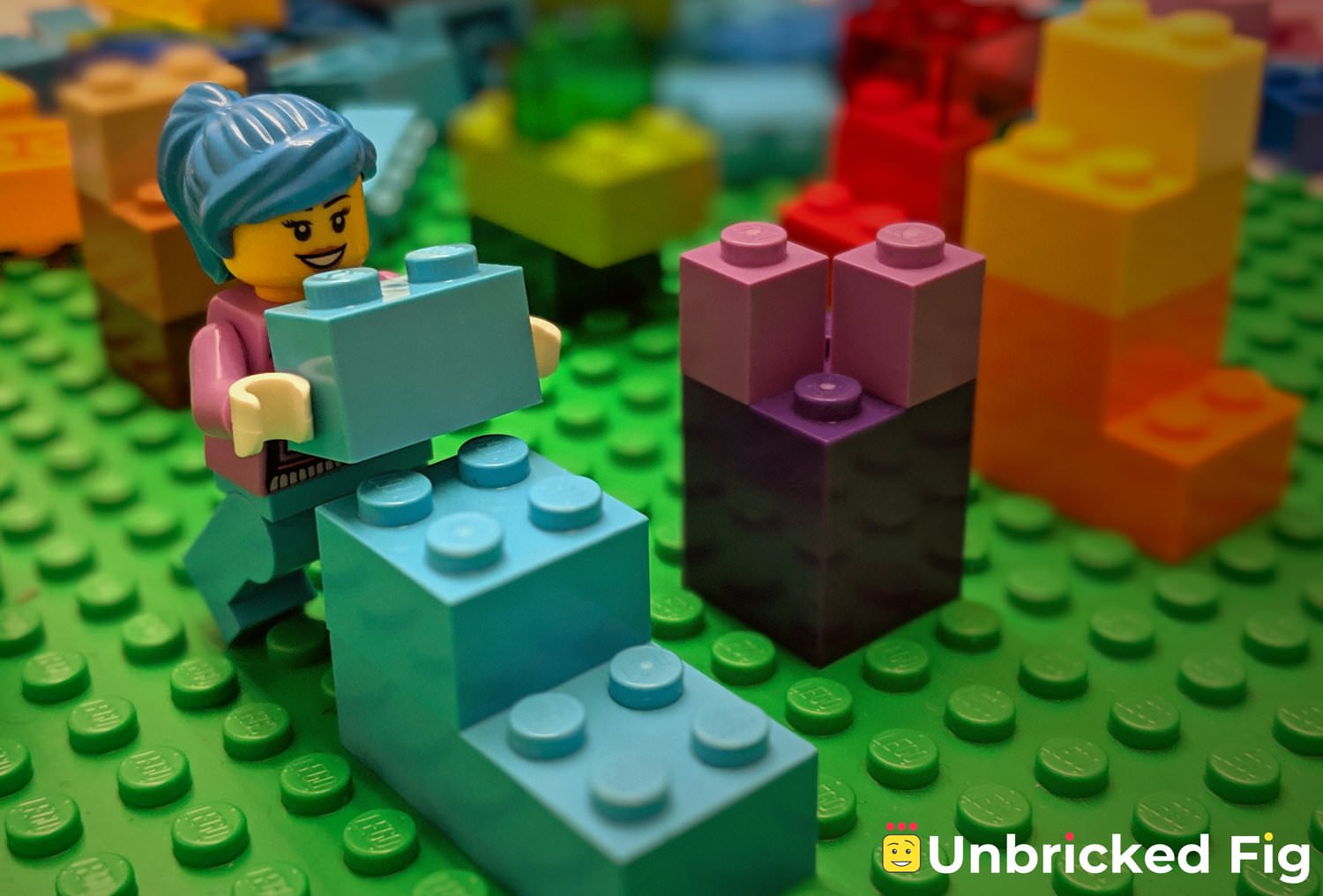
Why bricks?
Bricks might seem like an odd choice for a habit tracker at first, but the more I thought about it, the more benefits I saw:
-
Bricks are fun: and our tedious adult lives can always use more playfulness.
-
Bricks are physical: if you work behind a computer most of your day (who doesn’t anymore?), it can be incredibly satisfying to do something with your hands other than move bits and bytes at the click of a mouse. It’s not quite stonemasonry, but handling bricks keeps your fingers nimble and engages your senses in a way that screens cannot.
-
Bricks are always on: when you place bricks on your desk, they are always visible, require no charging, and work offline – and if you share your habit intentions with other people in your household, others can also easily see your progress and provide extra encouragement (aka peer pressure).
-
Bricks don’t have notifications: while always visible, bricks will not scream at you for attention and interrupt your work with notifications. No need to unlock your phone, so you won’t have an extra trigger to check your email, Twitter feed or some other candy app “just for a little while.”
-
Bricks are modular by design: there are practically limitless ways of customizing a brick habit tracker to match your aesthetic preferences and activities you want to track. That’s a fundamental difference from phone apps, which force the app developer’s system on you and there’s not much you can do about it – unless you build your own app.
-
Bricks can help you focus: when you design your own system, you can emphasize the features you care about. For me, the two core features were tracking and comparing progress, without a number or streak attached to it.
How do you track habits with bricks?
The basic idea for a brick habit tracker is this: you choose a minifig to represent a habit, and use bricks and plates to track your progress every day. For example, a brick can represent a day’s worth of effort towards a goal, and because three plates build up to one brick, you can also use them to mark smaller chunks of effort. Yes, you still have the basic done/not done metric, but because bricks can be broken down into plates, you gain more modularity.

Building new habits takes time, so you should design your tracker to work across several weeks. How many? Fun fact: you’ll often see the number 21 as the magic number of days that are needed to form a new habit. The 60ies study, which is the source of this number, actually says 21 days is the minimum, but I guess that just isn’t as sexy as giving people a small concrete number.
A more recent study found that it takes on average 66 days for a new behavior to become automatic. It all depends on how complicated the new habit is, your context, and of course personal characteristics as well. Building a simple habit of drinking a glass of water might take less than 21 days, but becoming a habitual runner might even take a great part of the year (especially during cold winters, would be my guess). How do I know all of this? I’ve read in on James Clear’s blog, which you should check out if you want to learn more about habits.
A thing worth noting when it comes to habits is that you’ll want to limit the number of habits you track at the same time. The number depends on how complicated the habit is and whether you’re doing it from zero or whether it’s something you’re already used to doing but just want to challenge yourself to improve. As a rule of thumb, I’d say you should keep it at four habits or less, with less probably better, because we’re but simple monkeys trying to live in a world that’s already complicated enough as it is, thank you very much.
The Unbricked Fig experimental tracker
I’ll now go into details of my own implementation of a brick tracker that I’ve been testing for the last couple of weeks. Do keep in mind that this is just one possibility, you can use the bricks in different setups. Feel free to skip the details of my setup if you want to experiment with your own ideas.
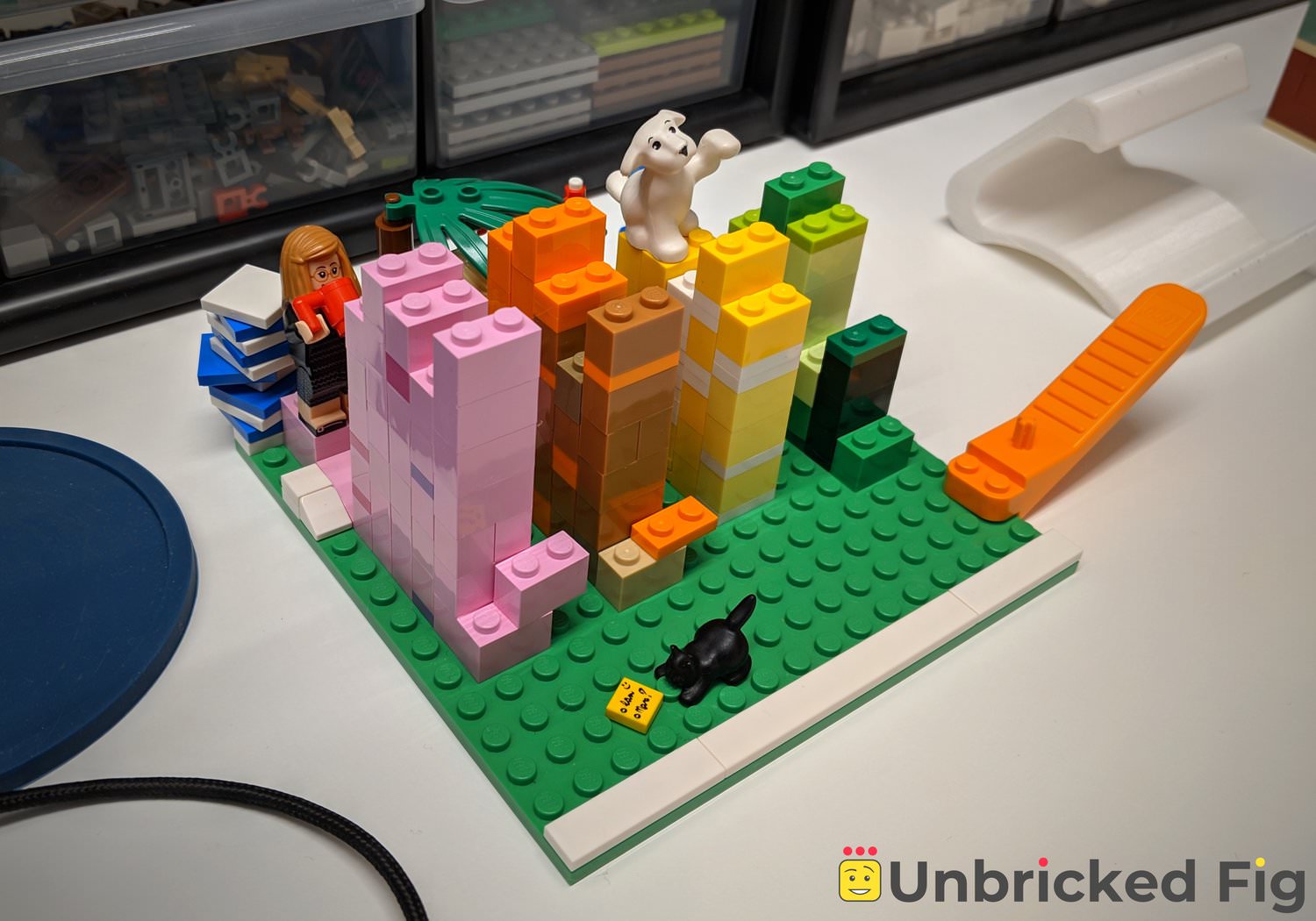
Step 1: embody the habits you want to track/develop
This step is probably the most difficult one because you have to choose which new habits you want to build or which existing ones you want to keep track of. For each habit, assemble a minifig that embodies the spirit of the habit – the habit avatar. Have fun with this step, I suggest you set aside an hour to think about your goals and what the habits you choose mean to you. Limit the number of habits to four max, preferably less.
For my own experiment, I’ve chosen the following habits to track:
-
Focused reading & writing: a habit of undistracted reading and/or writing I wanted to revive. Perfectly embodied by the minifig of Margaret Hamilton from the Women of NASA set 21312. She’ll obviously need coffee, lots of coffee, so I’ve equipped her with a bold red coffee mug and placed a big stack of books in the background.
-
Mindfulness training: a habit I wanted to maintain and expand. Embodied by a chill minifig, just being present on a beach under a palm tree because that’s how I’d like to spend my winters.
-
Exercise: another habit I wanted to maintain, without going overboard because there is such a thing as too much exercise that leads to injury. The chosen avatar for this habit is another awesome minifig from the Women of NASA set: Mae Jemison, an astronaut, and dancer, who also kicks ass in science. Not that my levels of exercise would match those required for astronaut training; I just wanted to remind myself that getting injured is no way of getting a seat on the (now retired) shuttle.
-
Play: and finally, a reminder for taking it easy and enjoy pure play once in a while. Embodied brilliantly by a minifig in a unicorn costume, holding a sandbox bucket and a magic wand to remind myself to have fun with this one.
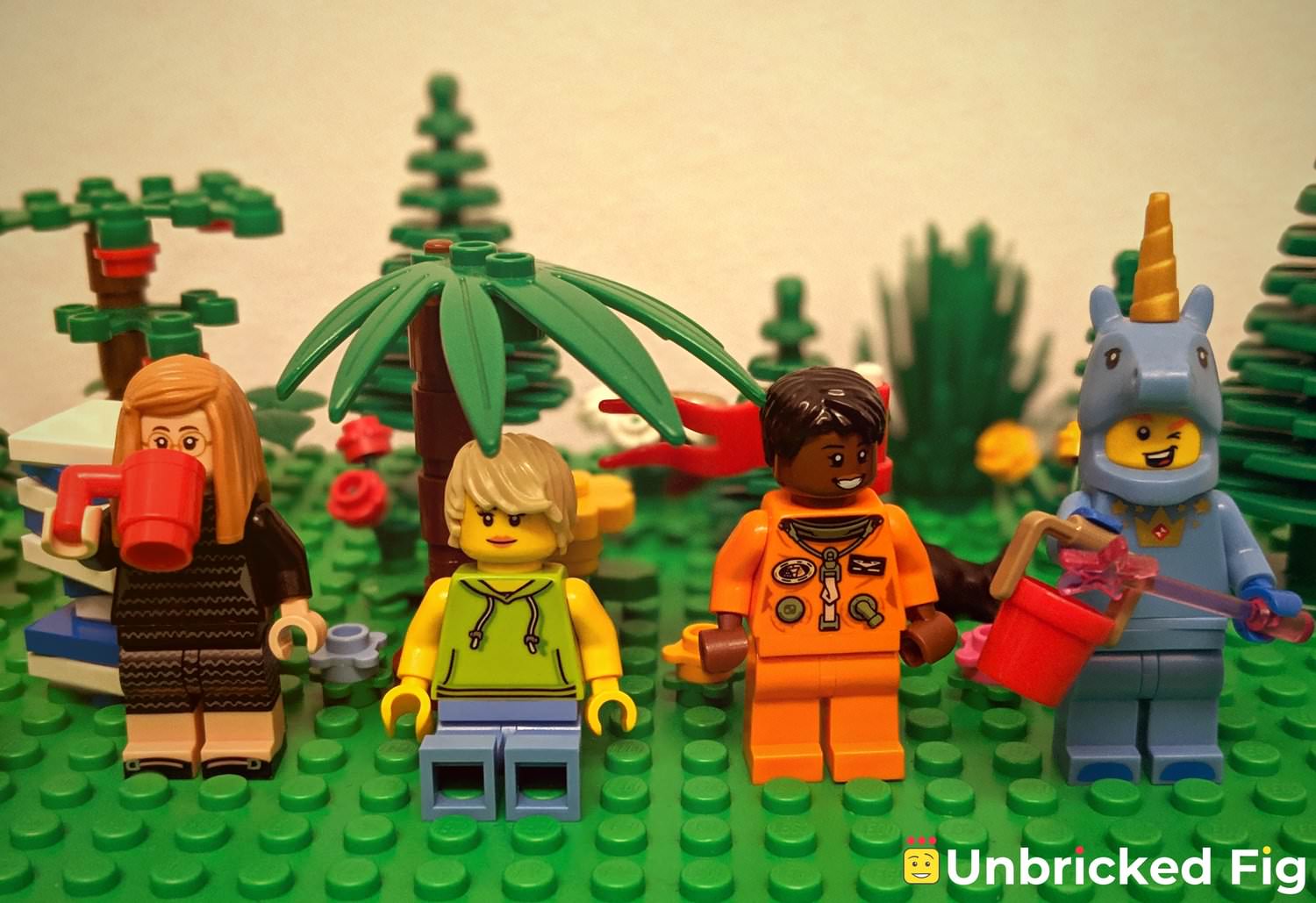
Step 2: match your timeframe to a tracking plate
Once you have your habit minifigs lined up, it’s time to decide on a timeframe you want to track and match it to a plate. I decided to track the four habits over 10 weeks (because the average 66 days I mentioned above are approximately 9.4 weeks), so a 16x16 plate seemed ideal. Here’s my brick math for choosing this size:
-
By allocating four studs to each minifig, you can comfortably place them side by side, even with accessories in hand, so you can nicely track four habits if you have 16 studs in width.
-
For 10 weeks, I need 10 “rows” for habit tracking. On top of that, I need some space for minifigs and plate decorations, hence 16 studs in height as well.
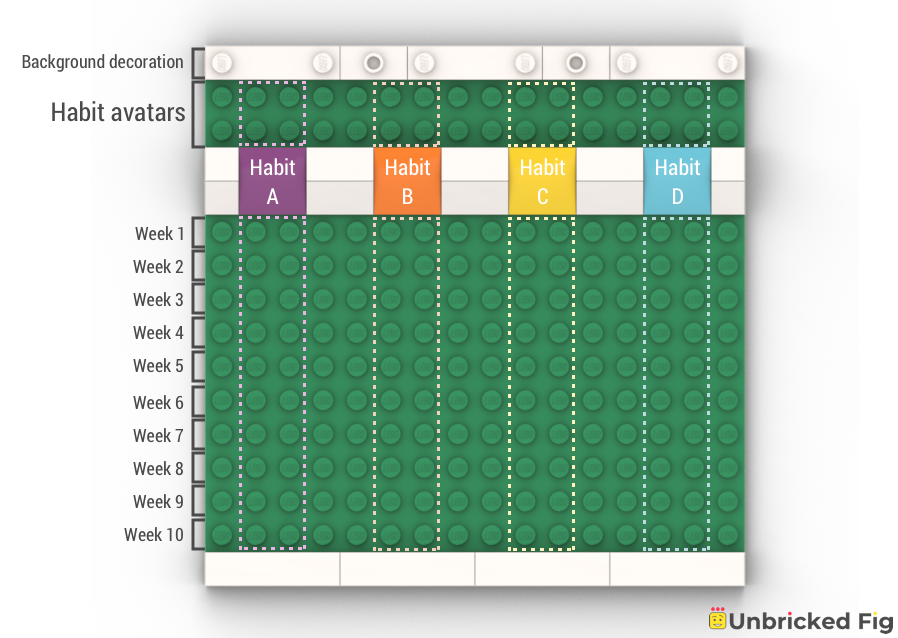
With a tracking plate set up, add your habit avatars (minifigs) to the scene. Depending on how much effort you expect to put into a particular habit, you can either place the minifig in a standing or in a sitting position. Here’s my brick math behind this:
-
A brick represents one day’s effort, so to pass a standing minifig’s height, you will need at least five bricks. In other words, a standing minifig asks for at least five days of completed habit in a week.
-
If you want to up the challenge, you can place the minifig on one or two 2x2 bricks to raise the minifig’s expectations.
-
If you want to go easy on a habit, you can sit the minifig down. This is a sign to take it easy, yet still try to get to the minifig’s level each week to maintain consistency.
Step 3: write down the habits you’ll be tracking
Now, before you start tracking your progress with bricks, I suggest you also write down your goals for each of the chosen habits. I know, I know, this feels like homework and not play! Wait ‘till you see the spreadsheet I’m using …
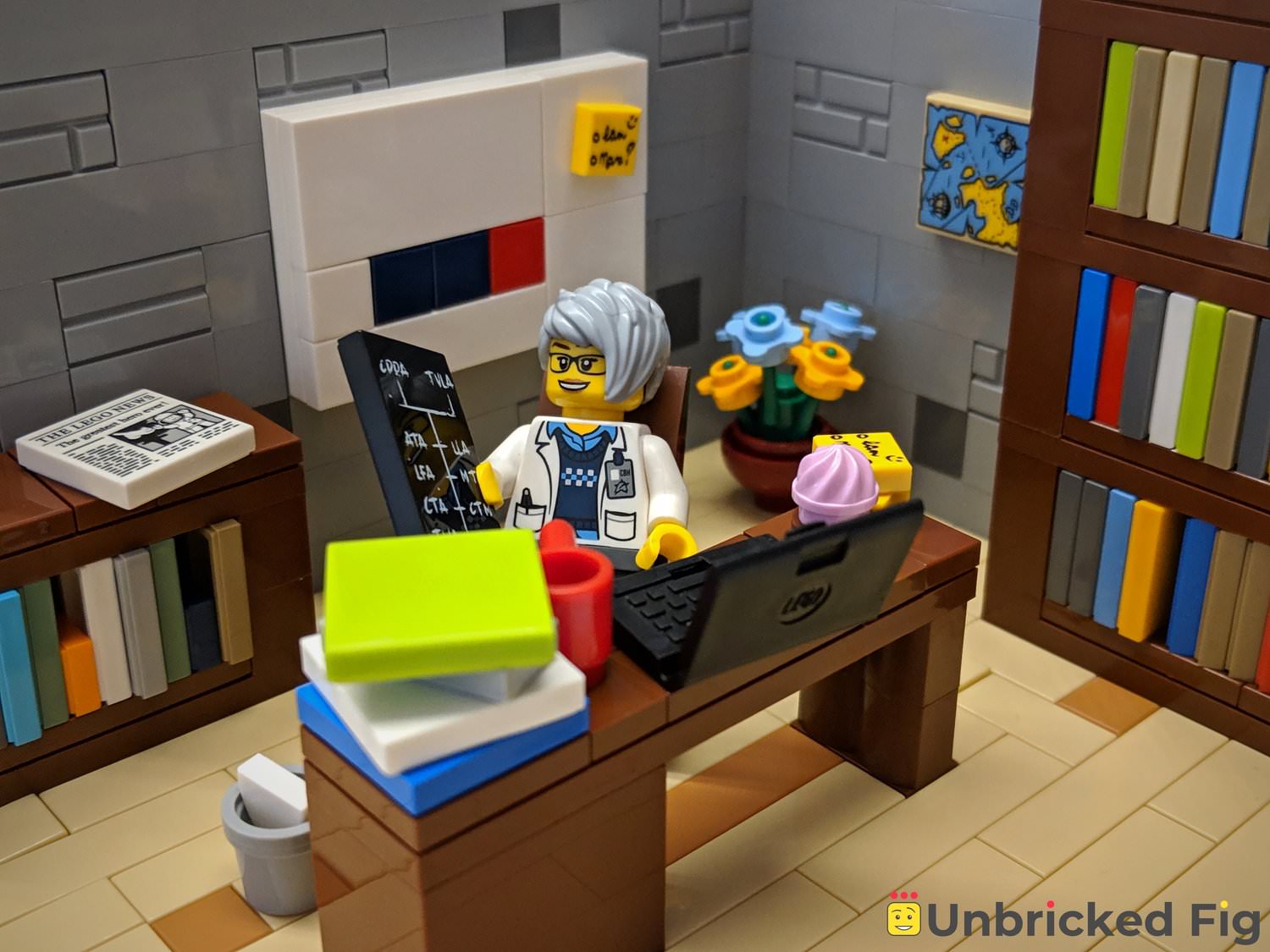
While writing down a plan might not be much fun, it’s an excellent tool against our own laziness and forgetfulness. By writing down why you’re doing what you’re doing, you’ll have something to show your future lazy self who will try to convince you a habit isn’t really all that important and that “it’s ok to skip a day, week, month or lifetime, who cares”! Remember, our brains like optimization and effort is icky unless you successfully bribe yourself with an epic reward. So basically, the plan is here to help you keep your future monkey brain on track and remind yourself of the rewards you’re playing for.
An important part of the initial plan is defining starting guidelines for what counts as a whole unit (a brick) of progress and what counts as a smaller unit (a plate). Let me give you an example for a running habit: if you’re in good shape, a full unit can be one hour of running, while for beginners it might be a 3km run with walking breaks. For a smaller unit, you could decide on a short dash around the block or 10 minutes of running. For some habits, you might choose to focus on full units only. The beauty of this system is that you can make it truly your own and you can even update the guidelines mid-tracking because you are in charge of deciding how much effort a brick is worth!
Here’s my own plan for this experiment. I used Google Sheets for my plan, so I can keep it open in a browser tab and write the occasional note, but any other tool will do. You can also print it out and keep it on your desk as a reference.
Step 4: start tracking!
Now, with all that prep behind you (the IKEA effect is real!), you can start tracking your progress every day. For each full unit of effort, add a brick to the row representing the current week and habit. Every day, you can add up to one brick – or up to three plates – to each habit lane, so you’re not tempted to overdo it. This means that each week (row) can have up to seven bricks.
You’ll want to add plates or bricks to the tracker soon after you complete an action, so your brain makes the connection between doing something and getting a brick reward. You can shift the current day’s plates or bricks by one stud to the side, so you don’t lose track of the current day’s progress. Just remember to shift them back on the stack at the end or beginning of the day.
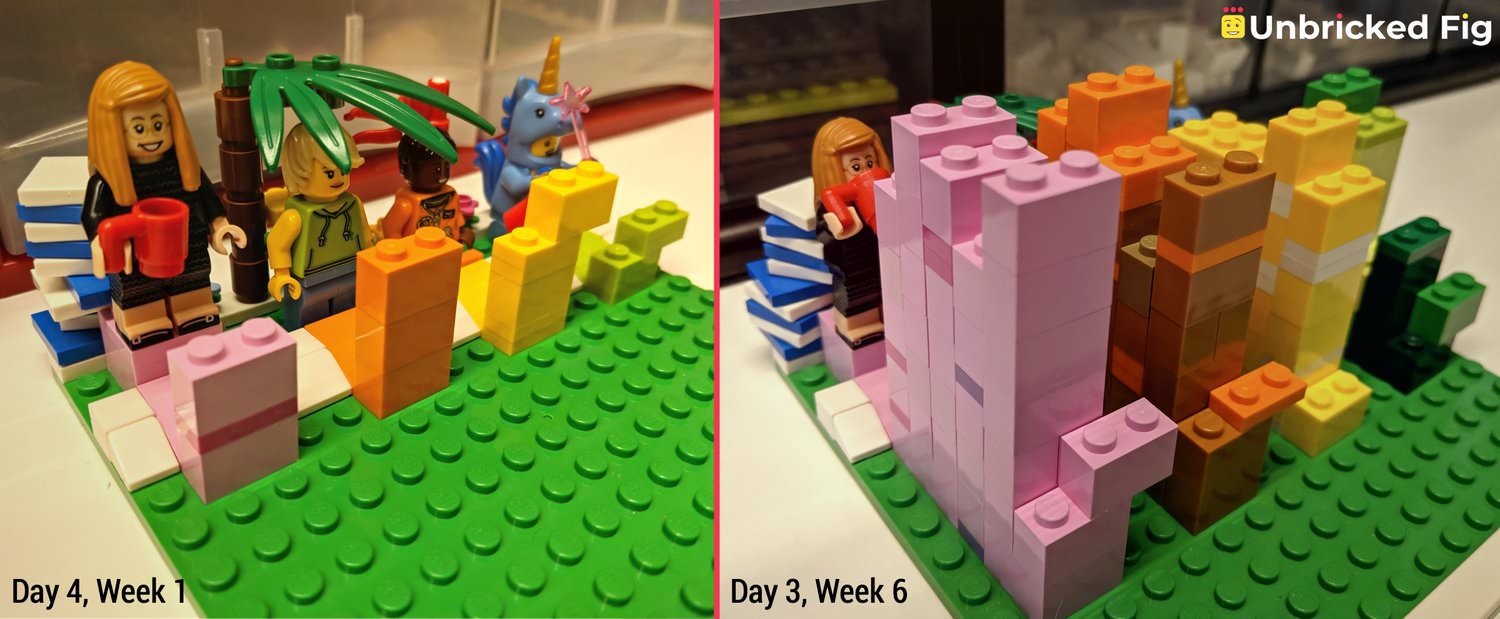
You will notice that bricks don’t sync to the cloud for backup, but you can make visual backups every day or week by taking a photo of your tracker. Remember, these are bricks, so you can improvise, experiment, and have fun with them. Figure out what works for you, make your tracker your own!
By the way, if you’re new to LEGO® and wondering how you can get enough bricks and accessories for your tracker, I recommend checking out the Pick A Brick section in the official LEGO Shop (brick and mortar stores have them too!) or a fan-run marketplace like BrickLink. I regularly use both to complete my brick collection based on specific needs or whims because sometimes you really need a whole bunch of LEGO® cats.
Step 5: At the end of the tracking period
What, another step? Yes, after completing your tracking period, I suggest you do a mini review session. Look at the plan and the habit tracking goal. For each habit, write a short commentary on your progress: what went well, what was below expectations, what was the biggest obstacle. Take a picture of the final status.
And then start again! You can keep the same habits/minifigs, or you can mix them up. Rearrange the tracking plate, change the colors, whatever feels right for you. Even if you keep the same habits, you can set up more or less ambitious goals by upgrading their height or sitting them down. And you can review your guidelines for units based on your progress.
If you decide to try out this system, let us know how the experiment went! I’d certainly love to see more brick habit plates – or completely wild experimental setups!
The experiment: sample of one
I’m now in week six out of ten in my brick tracking experiment, and these are my main observations so far:
-
Habit tracking: Tracking my progress with bricks feels better and more relaxing than using an app. Not having an app blackmail me with streaks makes me feel like I’ve got more choice in doing the target activities, yet seeing the tracker on my desk reminds me to do them. Of course, having a sample of one doesn’t really allow me to measure the effectiveness of this system objectively, but I’ve achieved my initial goal of having a less annoying habit tracker. (However, if a researcher wants to do an experiment with a control group without any form of tracking, one with app tracking, and one that builds their own brick tracking that would be totally awesome!) One thing that I will change in my next tracking period is to choose even fewer habits to focus on. I’m thinking of limiting myself to two habits I really want to improve in.
-
Brick limitations: one weakness I’ve discovered in week four is that it isn’t very convenient to pack your brick tracker for the road, while an app would easily travel on my phone. I ended up sending myself an email with a reminder of my progress while away from home, and I placed the bricks on the stack after I got back. It’s not ideal to have this kind of delay, but neither is traveling ideal for maintaining habits. Still, if you travel regularly, bricks might not be as feasible, unless you professionally travel with bricks (in which case I’m curious what your job is). Also, because bricks are not backed up to the cloud, you’ll want to take the occasional backup photo.
-
Brick supply: as you can see from the photos, I didn’t really have enough bricks for each color. For a habit you’re really dedicated to, you’d need up to 70 bricks for a 10 week tracking period. But another cool feature of bricks is that they snap beautifully together even if they’re not the same color! Due to limits in my brick collection, I also accidentally discovered that it works well to use plates in a different shade than the bricks, so you can easily see how many full and how many partial units you’ve completed.
Overall, I consider my experiment a success (which makes sense or I wouldn’t be writing this post). Seeing all the bricks on my tracking plate gives me a stronger sense of accomplishment than a simpler digital calendar does. I also love how playful this experience is, and the fact that I have a tangible record of how habits are built brick by brick, over time.
Unbrick your fig challenge
If you use bricks to visualize your developing habits, you will receive:
-
💎 10 playfulness
-
💎 5 self-regulation
